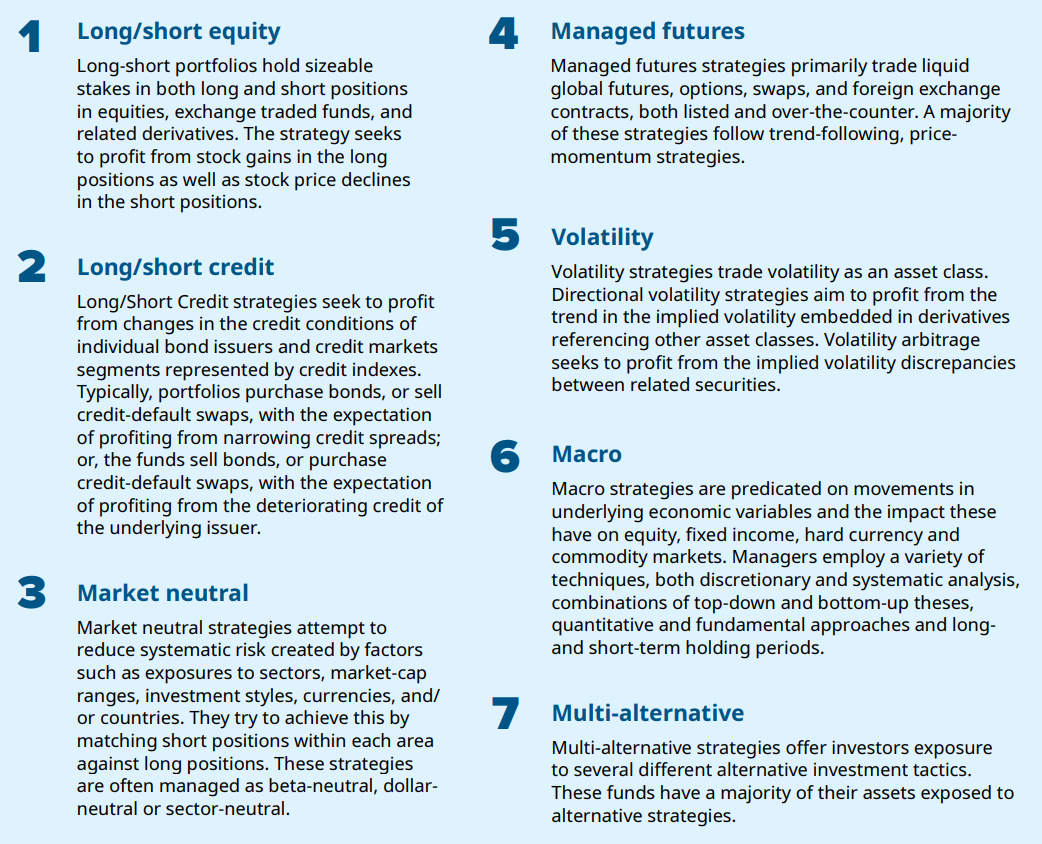Alternative strategies
Alternative investing includes alternative strategies that use sophisticated investment techniques, such as leverage, taking short positions and using derivatives. In general, alternative strategies are structured to hold a wide range of traditional and non-traditional financial assets, but they are managed using non-conventional methods.
For instance, leverage is the strategy of using borrowed money to potentially increase the return on a particular investment. Shorting is the ability to profit when the value of a given security declines. Derivatives are financial instruments whose value is linked to the price of a given underlying security, such as a stock.
Alternative strategies are powerful investment tools that can help an investor target certain risk-return characteristics. The goal is to generate a different pattern of risk and return in comparison to traditional investments – potentially even making profits when traditional markets or securities are declining in value.
Examples of alternative strategies:

1 Strategy definitions based on Morningstar Category Classifications and HFR Strategy Classifications. Commissions, trailing commissions, management fees and expenses all may be associated with mutual fund investments. Please read the prospectus before investing. Mutual funds are not guaranteed, their values change frequently and past performance may not be repeated. The content of this document (including facts, views, opinions, recommendations, descriptions of or references to, products or securities) is not to be used or construed as investment advice, as an offer to sell or the solicitation of an offer to buy, or an endorsement, recommendation or sponsorship of any entity or security cited. Although we endeavour to ensure its accuracy and completeness, we assume no responsibility for any reliance upon it.